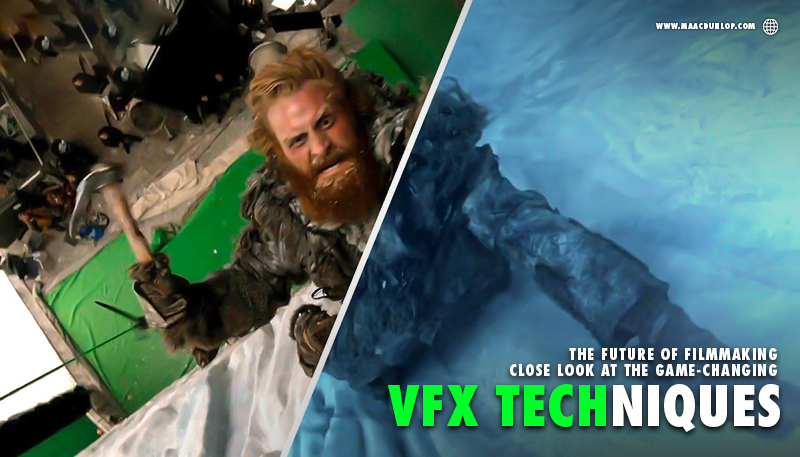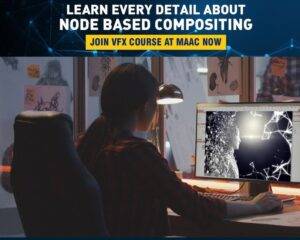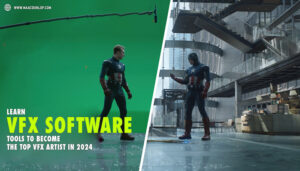In the ever-evolving landscape of filmmaking, Visual Effects (VFX) have emerged as a game-changer, transforming the way stories are told on screen. From creating mythical creatures to simulating complex environments, VFX has pushed the boundaries of imagination, enabling filmmakers to bring their wildest dreams to life. MAAC Dunlop, a leading VFX training institute, is at the forefront of nurturing the next generation of VFX artists who will shape the future of cinema.
The Evolution of VFX in Filmmaking
The journey of VFX in filmmaking began with practical effects and miniature models, gradually evolving into sophisticated digital techniques. Early milestones like the groundbreaking effects in “Star Wars” and “Jurassic Park” paved the way for the integration of VFX in mainstream cinema. Today, advancements in technology have made it possible to achieve photorealistic effects that seamlessly blend with live-action footage.
Key Game-Changing VFX Techniques
- Motion Capture (MoCap)
Motion capture technology has revolutionized character animation by capturing the movements of real actors and translating them into digital characters. Films like “Avatar” and “The Lord of the Rings” trilogy have showcased the potential of MoCap in creating lifelike performances, making it an indispensable tool for filmmakers.
- Virtual Production
Virtual production combines real-time rendering with traditional filmmaking techniques, allowing filmmakers to visualize scenes during the shoot. The use of LED screens and game engines, as seen in “The Mandalorian,” has enabled the creation of immersive environments without the need for physical sets. This technique not only saves time and costs but also offers unparalleled creative flexibility.
- AI and Machine Learning
Artificial Intelligence (AI) and Machine Learning (ML) are set to redefine VFX by automating complex tasks such as rotoscoping, compositing, and even facial animation. AI-driven tools can analyze vast amounts of data, improving the accuracy and efficiency of VFX processes. This technological leap allows artists to focus more on creative aspects, enhancing the overall quality of visual effects.
- Real-Time Rendering
Real-time rendering, powered by advanced GPUs and software, has significantly accelerated the VFX pipeline. It enables instant feedback and iterations, making the post-production process more efficient. This technique is particularly beneficial for high-budget productions and television series with tight schedules.
- 3D Scanning and Photogrammetry
3D scanning and photogrammetry have become essential for creating detailed digital assets and environments. These techniques involve capturing real-world objects and spaces in high resolution, which are then used to create accurate 3D models. The level of detail achievable through these methods adds a new layer of realism to visual effects.
The Role of VFX Training Institutes
As the demand for skilled VFX artists continues to rise, training institutes like MAAC Dunlop play a crucial role in preparing students for the industry. MAAC Dunlop offers comprehensive courses that cover the latest VFX techniques and software, ensuring students are well-equipped to meet industry standards. The institute’s hands-on approach, combined with industry expert mentorship, provides students with the knowledge and experience needed to excel in their careers.
The Future of VFX in Filmmaking
The future of VFX in filmmaking is incredibly promising, with continuous advancements in technology pushing the boundaries of what is possible. Emerging trends such as the use of virtual reality (VR) and augmented reality (AR) in filmmaking are set to create even more immersive experiences for audiences. Additionally, the integration of VFX with other technologies like blockchain and cloud computing will further streamline production processes and enhance collaboration.
Conclusion:
VFX has undeniably transformed the filmmaking industry, opening up new realms of creativity and storytelling. As we look to the future, the continued evolution of VFX techniques promises to bring even more groundbreaking innovations to the screen. MAAC Dunlop remains committed to empowering the next generation of VFX artists, ensuring they are at the cutting edge of this exciting field. By mastering these game-changing techniques, aspiring filmmakers and VFX professionals can look forward to a future where the only limit is their imagination.





